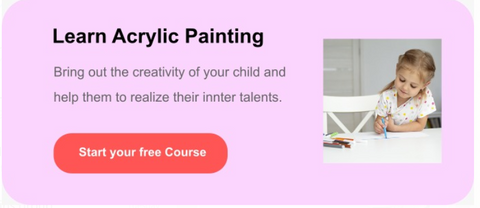Improving Hand Eye Coordination with Art

Every art lesson is created keeping in mind that it benefits the children in every possible way. This includes a holistic development of the child involving social, cognitive, emotional, and physical growth. Although the art project itself is important, the skills developed during the process of creating art will enable your child to become successful in school and life. One of the most important skills that are developed through art is hand-eye coordination and fine motor development.

During art lessons, the small muscles in the fingers, hands, and wrists of your child are exercised and strengthened, which helps him/her learn how to write easily. They learn how to grip the pencils and develop a sketch, knead the clay and pinch it to make 3D projects, and manipulate the tools to create their masterpieces! You may not realize it, but the control over finger movements used for clay modeling and mixing paints on a palette is the same control the child needs to be able to grasp a pencil and write. Without well-developed fine motor skills, a child may have difficulty learning to write or performing other critical tasks required in school, such as turning pages of books, cutting, drawing, and squeezing glue from a bottle. Art is a process based on active and conscious learning, involving various learning experiences, on different planes such as theoretical, technical, and creative. We have important warm-up exercises and rapid sketching activities included in our art lessons that develop hand control and improve the speed of drawing. Warm-up drawings are not merely simple exercises but extremely important especially for beginners or for any child who is not able to find time for enough drawing practice regularly. Proper warm-up exercises have a dual purpose, for literally warming up the muscles of the hand and for making the mind more agile. It develops a steady and confident hand and it increases the mind’s ability to observe and experiment. Every class starts with these practice exercises where instructors demonstrate the proper way to hold the pencil, position the arm, and explain correct hand movement. This helps children to improve their application of pencil strokes and develops better hand-eye coordination which is an important skill at their age.

Drawing is not just a creative and artistic process, it’s also a cognitive one because it implies coordination between hand and eye. It involves visual and motor skills. Hand-eye coordination is also an important skill used in countless activities daily such as writing, typing on a keyboard, playing a musical instrument, etc.
Join our live zoom classes to master the techniques of drawing/painting and improve the hand-eye coordination of your child!
